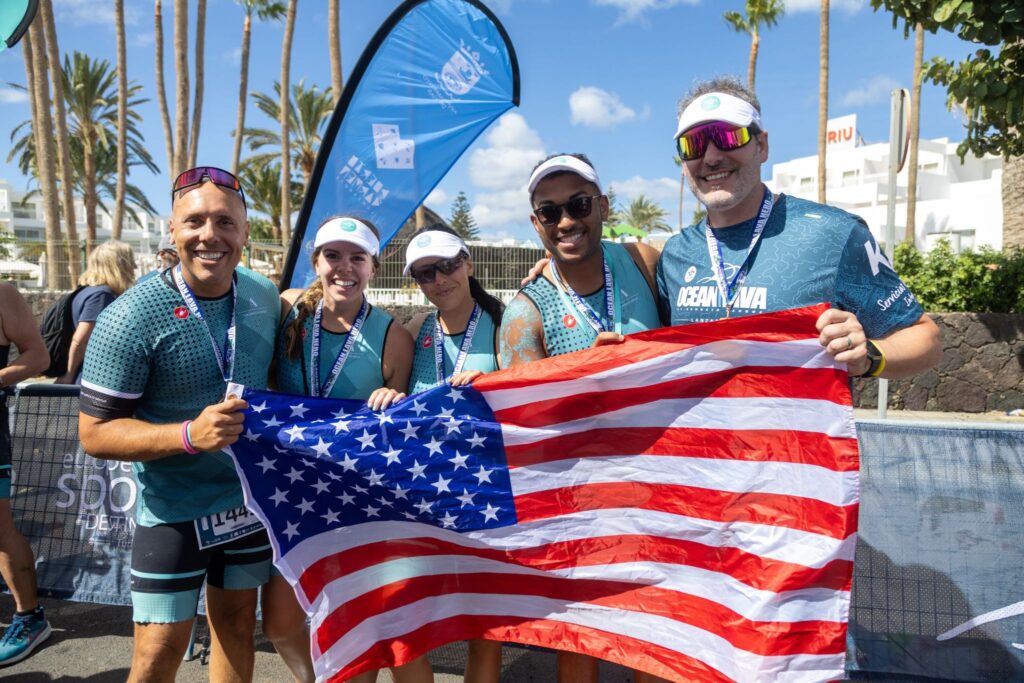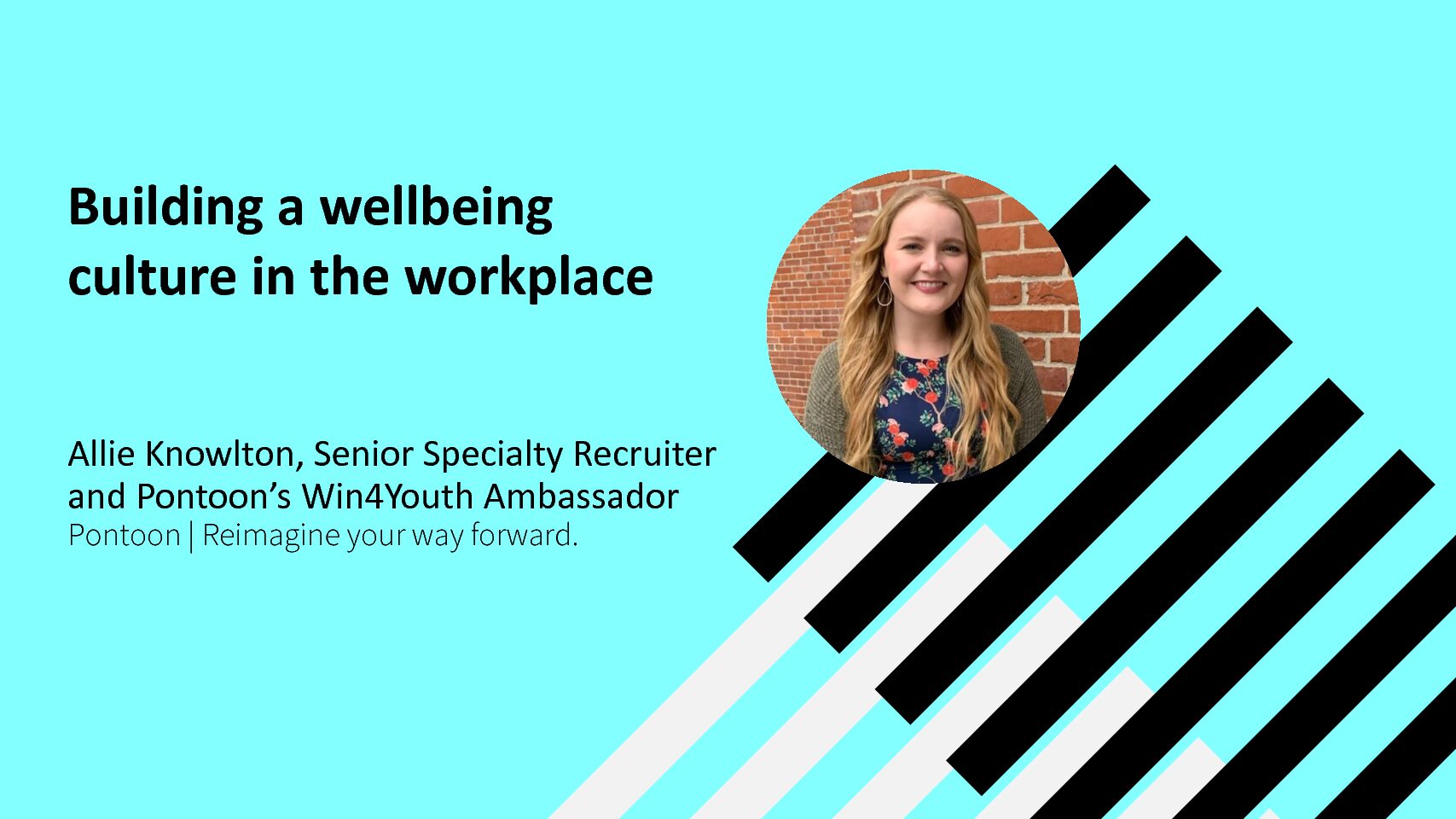Cultivating a wellbeing community at work: The power of whole health integration
Annually, the Win4Youth (W4Y) wellbeing initiative is a unifying platform for Adecco Group’s workforce, colleagues, and clients to better care for their overall health through physical exercise. Hours of movement (every activity counts) ranging from walking, running, biking, swimming, and yoga are then converted into a monetary donation to a global charity partner. As a culmination of the year’s wellbeing activities, a group of elected Wellbeing Ambassadors are invited to participate in 40 km of cycling, 10 km of running, and 1.5 km of swimming in an Olympic Distance Triathlon.
My W4Y journey
In October 2023, I was honoured to represent Pontoon Solutions in the annual OceanLava Olympic Distance Triathlon in Lanzarote, Spain. The week before the race, I spent time with 56 fellow Wellbeing Ambassadors from across the Adecco Group and the world. We laughed, cried, and cheered each other on through physical challenges.
However, this life-changing experience started six months before the event when I was selected to represent Pontoon as one of two global Wellbeing Ambassadors, together with Joyce Wijers. While working on my physical strength and mental toughness training for the triathlon, I promoted holistic wellbeing across the organisation. This included planning companywide challenges, growing wellbeing communities at work, speaking at global town hall events and implementing monthly wellbeing activity calendars for staff.
Mental health is vital to optimal physical wellbeing
The benefits of physical exercise extend far beyond the physical. It’s time that more organisations start prioritising their workers’ mental health. The COVID-19 pandemic catalysed businesses to recognise the importance of mental health care, with 23% of employees noting the introduction of new mental health benefits by their employers during this period. After all, a healthy mind leads to a stronger body, better work performance, improved relationships, and overall job satisfaction. Boosting employee mental health is not just corporate benevolence but a strategic long-term investment.
“65% of workers have suffered from burnout in the past 12 months.”
Now, almost four years after the initial COVID outbreak, new research from the Adecco Group points to the continued need for mental health benefits as workers struggle with burnout. The latest Global Workforce of the Future report, capturing the opinions of 30,000 workers across 23 countries, paints a grim picture of mental health in the workforce. Due to increased workload, lack of leadership and prioritising time away from work to rest and recover, 65% of workers have suffered burnout in the past 12 months.
Employers must broaden their perspective of whole health care, incorporating physical and mental health benefits that encourage healthier routines for employees’ minds and bodies. The imperative here is clear: the prosperity of any business is intrinsically tied to the health and engagement of its workforce. It’s incumbent upon companies to invest in the holistic wellbeing of all workers.
Building resilience through physical exercise
Incorporating physical activity into a daily routine is not just about personal health and wellbeing. It’s also about creating an environment conducive to optimal productivity and resilience. As employers, wouldn’t we all want our teams to be healthy, happy, and highly productive?

Our personal and professional responsibilities can sometimes get in the way of achieving optimum physical health. Here are a few takeaways for HR leaders to consider when encouraging workers to take responsibility for their physical fitness and building a confident and resilient workforce:
- Make work/life balance work for everyone: Allow flexibility in the workday to promote more movement and physical training. For example, I had never been the before-work workout type, but my training had me waking up before sunrise so I could be in the pool by 6:30 am. It’s easy to make excuses and blame the lack of time, but a flexible schedule can help create positive habits when something is essential to an employee.
- Consistency is key: Promoting a strong, healthy body and fostering trust in the process is crucial. My first swim session in May was 600 meters. I remember looking ahead to my schedule for July and thinking, “1200 meters!? There’s no way I will be able to do that!” Somewhere along the way, I stopped letting those numbers intimidate me and trusted my training plan and the support received from my organisation. Before I knew it, the length of the triathlon swim (1500m) was a breeze, and I found a new activity that I enjoyed and could continue after the triathlon.
- Encouragement builds resilience: When someone tells you they are proud of you, it makes you feel good. It was a great reminder of why feedback and praise are so important, especially in the workplace. Those messages of support and encouragement kept me going throughout my training and the triathlon. I was able to bounce back from COVID-19 in July through help from my colleagues and my organisation. This reminds me of a great quote – “a setback only paves the way for a comeback”.
Growing a wellbeing community in the workplace
Community is a powerful thing. It’s a group of individuals who consistently support and inspire one another to reach their highest potential, even when no one else is watching. But how can you cultivate a thriving wellbeing community in your organisation? I am so grateful for the immense support from my colleagues and loved ones through my Wellbeing Ambassador and triathlon journey. I was thrilled when my parents flew 16 hours to Spain to support me and even ran alongside me to the finish line!

Is your company ready to cultivate a successful wellbeing community within your workforce? It might seem like an overwhelming task, but by starting small, creating avenues for connection, and leading by example, you can adopt a culture of wellbeing that benefits all employees.
Let’s explore a few of these strategies that you can implement right now:
- Start small: You don’t need to engage every employee to form a community. Find employees who will act as ambassadors and spread the word to their teams and colleagues.
- Create ways to connect: At Pontoon, we used Microsoft Teams and the Strava app to join colleagues who may otherwise not have the opportunity to interact with one another. These forums allow colleagues to chat about wellbeing, stay informed, and encourage one another.
- Focus on total wellbeing: You don’t have to train for a triathlon to engage in wellbeing activities. Pontoon focuses on all aspects of wellbeing – physical, mental, and social. Employers need to offer a variety of wellbeing resources and activities, not just those that promote physical activity.
- Be a role model: It’s important to champion wellbeing behaviours, especially if you are a people leader. Find ways that you and your team can care for your wellbeing throughout the work week. Make it clear to others when you are taking actions to support your wellbeing. You can be a role model while building a sense of connection and community. For example, share a picture of you doing a wellbeing activity on your lunch break and encourage others to post a response once they have done the same.

Workplace wellbeing initiatives have transitioned, once considered a “nice to have” benefit, to becoming an essential expectation for employees. All leaders within an organisation must take responsibility for worker wellbeing. Be patient; reaching a desired level of buy-in and support from people managers will take time.
HR leaders should consider wellbeing a central pillar in their people strategy. It’s crucial to designate individuals tasked explicitly with keeping wellbeing at the forefront of employees’ minds.
Related Post
Win4Youth (W4Y) is the Adecco Group's wellbeing initiative that encourages employees, associates, and clients to keep active and clock hours spent exercising to benefit our global charity partner, Plan International.
Allie ...






